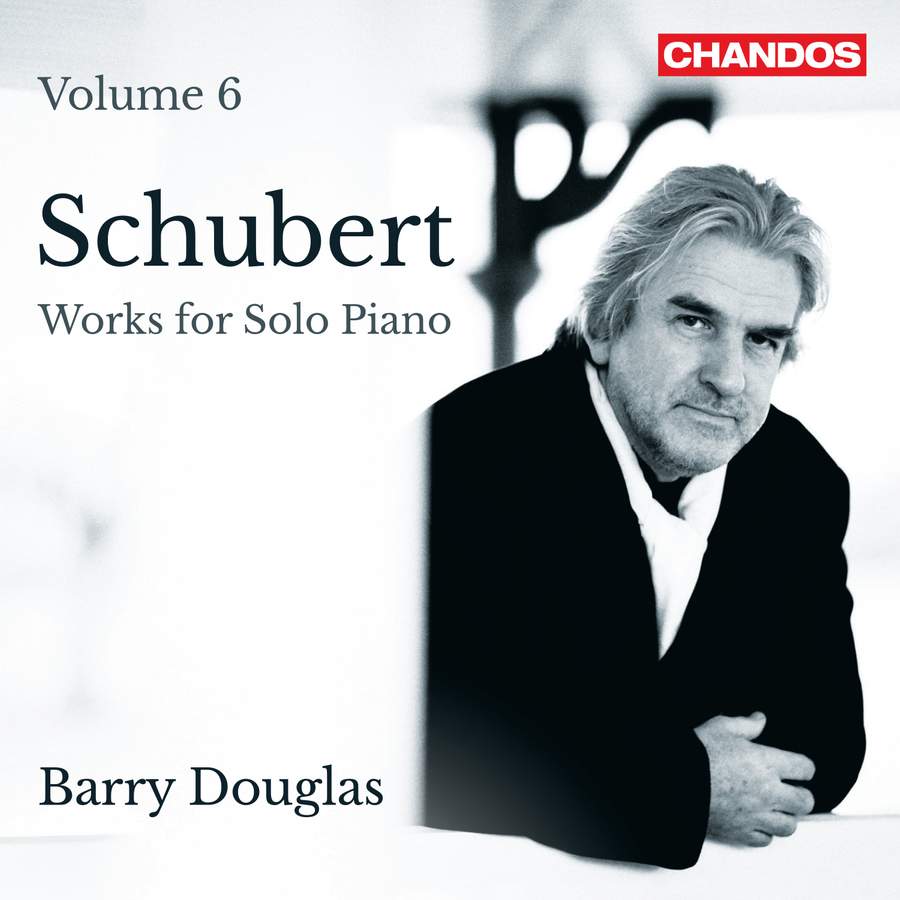SCHUBERT Works for Solo Piano, Vol 6 (Barry Douglas)
View record and artist detailsRecord and Artist Details
Genre:
Instrumental
Label: Chandos
Magazine Review Date: 11/2022
Media Format: CD or Download
Media Runtime: 82
Mastering:
DDD
Catalogue Number: CHAN20253

Tracks:
| Composition | Artist Credit |
|---|---|
| Sonata for Piano No. 16 |
Franz Schubert, Composer
Barry Douglas, Piano |
| 4 Impromptus |
Franz Schubert, Composer
Barry Douglas, Piano |
| Ave Maria, 'Ellens Gesang III' |
Franz Schubert, Composer
Barry Douglas, Piano |
Author: Patrick Rucker
Barry Douglas’s traversal of Schubert’s piano music has now reached the sixth instalment with the largest and last of the A minor Sonatas and the second set of Impromptus, garnished with Liszt’s transcription of the ‘Ave Maria’.
Interpreters of Schubert have to weigh up whether this wonderful music is essentially Classical or a product of early Romanticism. Yet such neat distinctions are probably specious. Surely Schubert is best viewed as a transitional figure, one who cultivated Classical forms in his symphonies and chamber music with growing mastery but who was nonetheless sensitive to the zeitgeist, exploring new territory in his songs, smaller piano pieces and, to an extent, his operas. It may be that the most effective Schubert interpretations, whether by conductors, singers or instrumentalists, are those that manage to blend the attributes of both Viennese Classicism and the emergent Central European Romanticism in just the right proportions.
There are moments in Douglas’s new Schubert recording that sound more evocative of an over-stuffed 1870s Parisian salon than of a Biedermeier drawing room in Vienna during the 1820s. Perhaps most noticeable are the tempos. The second Impromptu, which Schubert marks Allegretto, unfolds so slowly that it threatens to deflate entirely. The exquisite variation set that comprises the Sonata’s Andante con mosso tends to drag. In the sixth variation, Douglas suddenly and inexplicably goes wooden, as though accompanied by a metronome. It’s a curious and oddly deleterious affect that will return in the Trio of the Scherzo. The architecture of the Sonata’s opening Moderato is destabilised by a tendency to slow the ends of phrases.
This is not to say that these interpretations are without merit. Douglas captures the fiery flight of the Sonata’s Rondo with aplomb, with an accelerating coda and a measures-long diminuendo that are nothing short of breathtaking. In closely woven textures such as the second Impromptu and the second movement of the Sonata, chords are beautifully voiced. The manifold complexities of texture posed by Liszt’s transcription of the ‘Ave Maria’ are negotiated with ease, always supporting and enhancing the melody.
Discover the world's largest classical music catalogue with Presto Music.

Gramophone Digital Club
- Digital Edition
- Digital Archive
- Reviews Database
- Full website access
From £8.75 / month
Subscribe
Gramophone Full Club
- Print Edition
- Digital Edition
- Digital Archive
- Reviews Database
- Full website access
From £11.00 / month
Subscribe
If you are a library, university or other organisation that would be interested in an institutional subscription to Gramophone please click here for further information.




